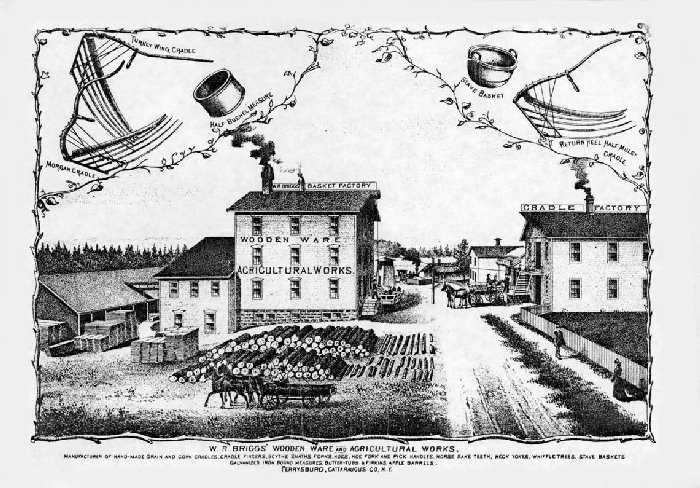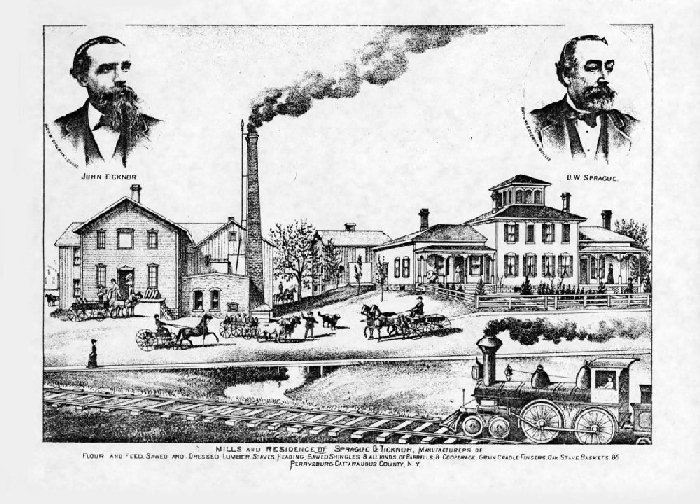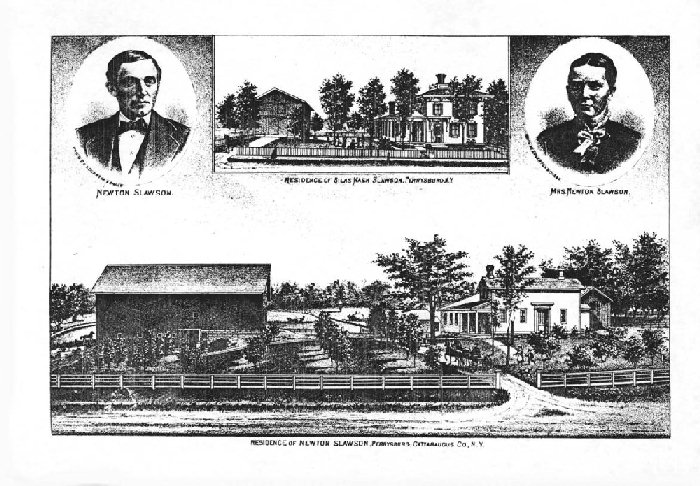This is the extreme northwest town of the county, and was originally erected as Perry, April 13, 1814, by an Act which provided "That all that part, of Cattaraugus County situated west of the east boundary line of the seventh range of townships, in the said Holland Company's land, shall, from and after the day preceding the first Tuesday in April next, be erected into a separate town by the name of Perry,* and that the first town?meeting in said town shall be holden at the house lately occupied by Mr. Nichols, deceased, on the second Tuesday of April next." These magnificent bounds were contracted by an Act of the Legislature, April 10, 1818, which provided that all, that part of the town lying south of the fifth tier of townships should be set off as a separate town to be named Little Valley. This act also changed the name of the old town to Perrysburg. Another division was made Jan. 29, 1363, when the territory east of the south branch of the Cattaraugus Creek was taken off to form Otto, and a third reduction Feb. 7, 1835, when Persia and Dayton were taken off. It now comprises so much of township 6, in the ninth range, as lies south and west of Cattaraugus Creek, -18,328 acres. A small portion of this is included in the Cattaraugus Reservation of Seneca Indians, which extends into the town on the north and the east.
The surface of the town is elevated nearly 1000 feet above the lake at Dunkirk, is somewhat hilly in the south, but becomes level and plain?like in the north. But little of it is so much broken that it may not be cultivated. The town was originally covered with a fine growth of timber, chiefly deciduous woods, although there were fine forests of pines and hemlocks in the northern part, and when cleared up afforded very productive land of easy cultivation. The soil varies from a rather stiff clay to a gravelly loam, and is especially favorable for growing grass and corn. The natural drainage in the south and the east is excellent, here being the head?waters of many small streams, flowing northward into Cattaraugus Creek and forming in their course Big and Little Indian Creeks, and Mill Brook. These streams afford limited water?power, and some of them have beds of rock from which good building?material maybe procured. This rock is also found in ledges in other parts of the town.
EARLY LAND-OWNERS AND PIONEER SETTLERS.
The records of the old town of Perry indicate that the following were land-owners in 1818, four or five of whom had " articled" as early as 1815
|
|
Most of the above lived in the town at that period or became settlers within a few years.
John Clark, who came to the town in 1815, was probably the first man to bring in his family. For a number of months, Mrs. Clark was the only white woman in town, and did the baking for the neighboring settlers. Clark kept a tavern on lot 28, in a log house, about 1816, and after a few years removed to the West.
Phineas Spencer, on lot 20, also came in 1815. He was a large-hearted, generous, and enterprising man. He removed to Gowanda, then called Lodi, where he kept the first store, and became a prominent public man. He died Sept. 31, 1839.
Hugh Campbell came from Albany County in the fall of 1817. He had at that time four children. The oldest son, Chancellor, then a lad of seven years, yet resides in town, and is now one of the oldest settlers. Another son, Colin, lives in the eastern part of Perrysburg. Hugh Campbell lived on lot 9, was in early times one of the foremost men in town, and died at his adopted home about 1870.
William Cooper came from Saratoga County to prospect for land in 1816, making a selection on lot 28. He visited the town again in 1818, but did not bring in his family, consisting of a newly-married wife, until the following spring, just before the ice broke up on Cattaraugus Creek, which they crossed at Gowanda. He was accompanied by his brother-in-law, Truman Edwards, and Daniel Johnson, and the journey was made by ox-teams and sleds, and was attended with considerable adventure and real hardships, which did not daunt the young pioneers. William Cooper became one of the representative men of the county. He died in Perrysburg in December, 1874. He had three sons,-William, who became the sheriff of the county, Waldron, and George. One of his daughters became the wife of Devillo Smith. Benjamin Cooper, a brother of the above, visited the town frequently in early times, but did not come in as a pioneer. For the past forty years he has been identified with the town, and is now one of its oldest citizens.
Truman Edwards also located on lot 28, and at once applied himself to the arduous work of making a home in the then wilderness. He became a useful, respected citizen, holding many offices of trust. Two sons grew to manhood, James and E. M. The latter resides on lot 27, and has in his possession a noteworthy relic of pioneer times. It is a cow-bell more than two hundred years old, and was brought from England to the wilds of Connecticut by the Edwards family when that country was first settled. It has been transmitted from generation to generation, and has told the whereabouts of the cattle in the wilds of half a dozen different places where the oldest of the Edwards' went as pioneers, and was given in Saratoga by Isaac Edwards to his son, Truman. Such long service had so much worn the edge that it has been cut off several times, but it is yet a respectable memento of the olden times.
Daniel Johnson settled on the farm now owned by E. M. Edwards. Several of his sons live in this and the adjoining towns. Benjamin Parkman accompanied Daniel Johnson and William Cooper from Saratoga in 1818, and still lives in town, an old and respected citizen ; and George Flower and Samuel K. Strickland, pioneers of the same period, removed to Dayton, after residing in Perrysburg a number of years.
Simeon Waterman and his brothers came about 1816, and for many years were leading men of the town. At the house of the former, on lot 8, were held the early town meetings. This place is now owned by Devillo Smith. Benjamin Waterman lived on the Dailey place, on the flats near Gowanda, where he kept the first tavern in town. John Sprague, an early settler on lot 43, moved to Illinois ; and Ralph Griswold, who came at the same period, 1816, settled on lot 8.
Stephen Crocker, the son of a Quaker, came the same year, and opened a farm on lot 11. He was very progressive, and was one of the first to introduce and use good farming implements. He removed to the West, where he became quite a prominent citizen.
Alanson Dewey, at that time but eleven years old, came with his step-father, Ephraim Walker, from Attica, in 1817. After attaining mature years he settled on lot 4, where he still resides.
Abel Jolls was a settler on lot 4, about 1817. Here he reared two sons, who still live in that locality ; and Edwin Farnsworth, on lot No. 1, opened a farm, which is yet in possession of the family.
Abram and Jonathan G. Rug, came from Genesee County early in the spring of 1818. The latter selected the north part of lot 38, and began building a shanty there in March of that year, sleeping under a covering made by brush meanwhile. He became a widely-known citizen, and resided on the place until his death, May, 1877. The sons were Corrydon C., Addison, and Jonathan G., several of whom became physicians of note. Abram Rugg was an uncle of Jonathan G., also living on lot 38 until his death, many years ago.
John Dawley, from Jefferson County, visited the town in 1819, making a selection on lot 46. Next year he brought his family, settling in Chautauqua County near his land, which he commenced to improve, being assisted by his sons, Peleg and John R. The latter still resides on lot 47, one of the oldest citizens of the northwestern part of the town.
Daniel Prosser came from Otsego County in March 1818, as a teamster for a Mr. Wells, who settled in Chautauqua County. In May of that year he contracted for 100 acres of land on lot 34, on which he commenced chopping in December. The following spring he and his father, John Prosser, took up their abode on this land, and lived together until 1820, when the latter moved to Chautauqua County. Daniel then kept bachelor's hall, but soon concluded that it was too lonesome a way of life. By much saving, and selling a quantity of "black salts," he was enabled to become the owner of a fine white shirt, which was to be worn on his wedding occasion. But a misfortune suddenly ended his plans for happiness. The garment was hung up to dry with other articles of washing, and while at dinner, a cow, as if possessed by the spirit of evil, came along and chewed it to pieces. The marriage had to be postponed, but finally, after a season of work, and going in debt $3.50, the object was consummated. The shoes Mr. Prosser wore on this occasion were made by himself, from leather tanned in the hollow of a log by Johnson. Daniel Prosser has since resided on lot 34, rearing a family there, and although he is eighty-two years old, and endured all the hardships of a pioneer, is yet a hale and vigorous man. Daniel Brand was one of Mr. Prosser's early neighbors; Joseph Putney was an early settler on let 44 ; John Haven, east from Daniel Prosser, and Charles Blackney in the central part of the town. The latter yet resides at the village of Dayton.
Thomas Townsend, from Yates County, came before 1825, and purchased the John Clark place, where his son, John R. Townsend, now resides. Elijah Wells, from Oneida County, settled in the town in 1821, and reared sons named John, Dexter, Elijah, Luther, and Thomas, the latter now residing on lot 7. And John Parker opened a farm on lot 41, about the same time.
A brother of the latter, David D. Parker, came from Vermont in 1822, and took up a tract of land on lot 49. In after-years he removed to Versailles, where he died in December, 1875. A son, Myron M., was born May 24, 1824, and is one of the oldest native-born citizens of the town. Other sons, living in town, are D. N. and E. L. Parker.
North of the village of Perrysburg, Noah Cook and John-Eaton were early settlers, and yet live in that part of the town. At a later period, J. L. Wright and N. Slawson became prominent citizens of Perrysburg.
Many settlers-came to the town after 1825, and substantial improvements were made on every hand. In 1833, the owners of improved lands having buildings, whose value is here given, were as follows:
|
|
The population in 1860 was 1439, and in 1875, 1336. In addition, there are several hundred Seneca Indians on this side of Cattaraugus Creek.
PIONEER MEMORANDA.
Stephen Whitcomb erected the first frame building in town, on lot 5. This building yet remains on the farm owned by Luther Stilson.
About 1820, a Mrs. Brand, an elderly lady, died in the Prosser neighborhood, and was interred in the cemetery in West Dayton. This was probably the first death of an adult in the present town.
Olive Barton is credited with having taught the first school, in 1818. No particulars of the school have been learned.
Benjamin Waterman, near Gowanda, and John Clark, on lot 28, both opened taverns about 1816. The former was succeeded by Solomon Dunham, and the house which was used by them was destroyed by fire some time after 1830.
It is believed that Isaac Baloomb put up the first sawmill, on a branch of the Silver Creek, on lot 44, about 1820. On Mill Brook a saw-mill was put up in 1822, on lot 13, by L. A. Foote, which became the property, soon after, of Rufus Ware, and was once supplied with a run of stones for grinding. Here is now Noah Cook's saw-mill. On the Reservation, Garrett Hurd had a saw-mill; and in the northwestern part of the town, near the "High Bridge," Barker & Bebee had a lumber-mill in former times.
CIVIL ORGANIZATION.
The first records, peserved in the office of the town clerk, give an account of a special meeting held at the dwellinghouse of Simeon Waterman, Oct. 27,1816, for the following purposes, namely: " To see if the inhabitants would agree to have said town of Perry divided; to nominate one or more suitable persons for the office of Justice; and to see if the town would agree to unite with other towns in the county in a petition to have said county of Cattaraugus organized by the next Legislature."
"1st. Chose Simeon Waterman Moderator.
"2d. Voted to divide the town on the south line of the fifth tier of townships of the Holland Land Company
" 3d. Voted that Silas Nash, Timothy M. Shaw, and Daniel Allen be nominated as suitable persons for Justice of the Peace.
"4th. Voted to appoint six delegates as a corresponding committee to agree with other towns in the measure of petitioning to have the county organised and to effect a county nomination.
"5th. Voted that Silas Nash, Ira Waterman, Benjamin Waterman, Daniel Allen, Jared Benedict, and James Goddard be said committee."
The above was certified as a true record of the proceedings by Benjamin Waterman, town clerk, and was transcribed from the original, in 1823, by Phineas Spencer.
In 1817 the annual meeting was held at Simeon Waterman's, and after Silas Nash was chosen moderator, the following officers were elected
Supervisor, Silas Nash; Town Clerk, Benj. Waterman; ,Assessors, John V. King, Ahas Allen, James P. Pitcher, Daniel Allen; Commissioners of Highways, Truman Edwards, Simeon Bunce, Ira Waterman; Poormasters, Ahas Allen, Simeon Bunce ; Fence-Viewers, John Clark, John Waterford, Dan Allen; Pathmasters, Asahel Nye, Charles Barnum, John Clark, Simeon Bunce ; School Commissioners, Dan Allen, Phineas Spencer, Truman Edwards; School Inspectors, Elnathan Finch, Benj. Waterman, S. M. Shaw.
Since 1817, the principal officers have been as follows:
| Supervisors. | Town Clerks. | Justices of the Peace. | |
| 1818. | Silas Nash. | Phineas Spencer. | |
| 1819. | " " | " " | Silas Nash. |
| Daniel Allen. | |||
| Elisha Wood. | |||
| 1820. | " " | " " | |
| 1821. | " " | " " | |
| 1822. | Phineas Spencer. | Joesph Keys. | Phineas Soencer. |
| Benj. Waterman. | |||
| 1823. | " " | " " | |
| 1824. | Don S. Downer. | " " | |
| 1825. | " " | " " | Hugh Campbell. |
| 1826. | " " | " " | |
| 1827. | Joseph Keyes. | John G. McKee. | |
| 1828. | " " | " " | |
| 1829. | " " | |
Samuel Starr. |
| 1830. | Timothy M. Shaw. | " " | Truman Edwards. |
| 1831. | Truman Edwards. | " " | Luther Allen. |
| 1832. | Truman Edwards. | Samuel Starr. | Amasa L. Chaffee. |
| 1833. | Mark W. Fletcher. | Franklin Day. | Daniel C. McMillan |
| 1834. | " " | " " | Reuben Ward. |
| 1835. | Isaac Hull. | Samuel Starr. | Truman Edwards. |
| A. Sprague. | |||
| James Kirkland. | |||
| Chester Goss. | |||
| 1836. | " " | " " | Riley S. Shepard. |
| 1837. | William Cooper. | " " | A. Sprague. |
| 1838. | " " | " " | Abial Titus. |
| Eber M. Pettit. | |||
| 1839. | " " | Abial Titus. | Reuben Ward. |
| 1840. | (No choice.) | " " | Lester Wood. |
| 1841. | Daniel Prosser. | " " | Abial Titus. |
| 1842. | " " | " " | Truman Edwards. |
| 1843, | " " | " " | John Towsey. |
| 1844. | " " | " " | Lester Wood. |
| 1845. | " " | Truman Hinman. | Riley Shepard. |
| 1846. | " " | Abial Titus. | David Sanders. |
| 1847. | " " | Alex H. Parker. | John Towsey. |
| 1848. | James Kirkland. | " " | Jonathan Wood. |
| 1849. | " " | Harvey C. Hurd. | Benjamin Cooper. |
| 1850 | . " " | R. R. Davis. | David Sanders. |
| 1851 | " " | Nathaniel W. Hurd. | John Towsey. |
| 1852. | " " | " " | Elisha Brown. |
| 1853. | William Knowlton. | " " | Benjamin Cooper. |
| 1854. | David Sanders. | ||
| 1855. | " " | " " | Adney Hall. |
| 1856. | Truman Edwards. | Waldron Cooper. | Elisha Brown. |
| 1857. | " " | " " | R. L. Blackman. |
| 1858. | Elisha Brown. | D. W. Cooper. | David Sanders. |
| 1859. | " " | S. L. Titus. | John Towsey. |
| 1860. | " " | " " | Adney Hall. |
| Elisha Brown. | |||
| 1861. | " " | Frank Campbell. | Benjamin Cooper. |
| 1862. | " " | Frank H. Chadwick. | David Sanders. |
| 1863. | Samuel L. Titus. | '° " | George G. Bebee. |
| 1864. | Ransom L. Blackmer. | Le Roy Atwood. | Elisha Brown. |
| 1865. | Fred. E. De Wolf. | Wm. L. Haven. | David F. Moody. |
| 1866. | David F. Moody. | A. M. De Long. | Newton Slawson. |
| 1837. | " " | Samuel L. Titus. | George G. Bebee. |
| 1868. | " " | A. M. De Long. | De Forest N. Parker. |
| 1869. | " " | Alfred Clark. | David F. Moody. |
| 1870. | " " | L. J. Southworth. | Newton Slawson. |
| Elisha Brown. | |||
| 1871. | " " | " " | J. G. Rugg. |
| 1872. | F. E. De Wolf. | " " | David F. Moody. |
| 1873. | " " | Courtland H. Shaw. | J. G. Rugg. |
| 1874. | " " | " " | Newton Slawson. |
| 1875. | James M. Pettit. | " " | Wilber H. Merrill. |
| 1876. | David F. Moody. | " " | Elisha Brown. |
| 1877. | Reuben White. | " " | Ira W. Hawley. |
| David F. Moody. | |||
| 1878. | " " | . D. A. Slawson. | John E. Hall |
The records of the town in 1818 contain a resolution to divide the town on the south line of the fifth tier of townships.
"Voted, that Dan Allen, Phineas Spencer, and Benjamin Waterman be a committee to prepare a petition and send forward to the Legislature."
In 1821, voted, that the town of Perrysburg be divided into two towns, the division line to be the south branch of the Cattaraugus Creek.
In 1822, a special meeting was held, Dec. 24, to decide the lines of the town. "Voted, that the divisions be as follows: That the 5th and 6th townships of range 9, and, that part of the 6th township of range 8 lying west of the south branch of the Cattaraugus Creek be considered one town, and that put lying east be the other town; James P. Pitcher, Dan Allen, and Phineas Spencer be a committee to draft a petition to send to the Legislature."*
In 1824, $125 was voted for the support of the poor.
"Voted, that the fine levied on John Clark for retailing liquor without license be remitted on the part of the town."
THE PUBLIC THOROUGHFARES
of the town embrace a liberal number of excellent highways and the Erie Railway. The latter was completed through the town in 1851, and has a convenient station at Perrysburg village. The road enters from the south on lot 7, thence has a general northwesterly direction, south of the centre of the town, passing into Chautauqua County between lots 45 and 46. It has greatly promoted the prosperity of the town, and affords easy access to the markets on the lake and southern points.
One of the oldest roads in the town is the one passing east and west through Perrysburg village. It was located by the Holland Company, and along it are the first-settled farms. Some of the east and west roads in the northern part of the town were formerly cordaroyed to render them passable, but since the country has been cleared up they are comparatively dry and good.
THE CEMETERIES
are all controlled by school boards or cared for by individuals. The cemetery on lot 3 contains two acres neatly inclosed, and has some fine monuments. The land was donated by A. Dewey and A. Jolls, and the cemetery is in charge of a local committee appointed yearly. The cemetery on lot 17 was deeded to the school board of district No. 2 by David D. Parker. It contains one acre, and eras inclosed in 1877 with a splendid fence, costing $300.
On the northwest corner of lot 15 is a small but neat cemetery, containing some very fine stones; and on lot 43, several miles west from Perrysburg village, is a burialground containing the graves of many of the town's pioneers.
THE DAIRY INTERESTS OF THE TOWN
embrace several well-appointed cheese-factories and many private dairies, where butter of excellent quality is made. In 1874 the product was 68,950 pounds.
The Dewey Factory, on lot 1, was erected in 1813, by A. Dewey, as a creamery. It is now operated as a cheesefactory by Johnson & Bartlett, and consumes the milk of 325 cows, owned by 16 patrons, yielding from 8 to 13 cream cheeses per day.
The Scotch Factory, at Perrysburg, was erected in 1863, by Andrew Brainard. The building is 36 by 100 feet, two stories high, and is supplied with three vats. Robert McCubbin is the present proprietor, manufacturing 25 cream cheeses per day. The factory receives the milk of 700 cows,-about 14,000 pounds per day, owned by 50 patrons, and gives employment to 4 hands.
| * On the 29th of January, 1823, the Legislature set off a new town, which was named Otto. It first included all of township 5, range 8; but two months later that part of the town lying west of the south branch of Cattaraugus Creek was re-annexed to Perrysburg. |
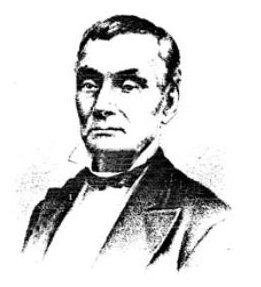 |
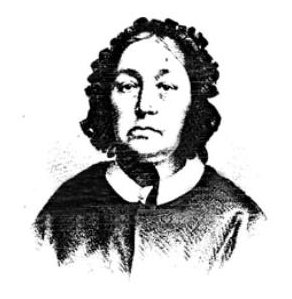 |
| Daniel Prosser |
Mrs. Celia Prosser |
|
Photos by E. A. Edgerton, Gowanda |
|
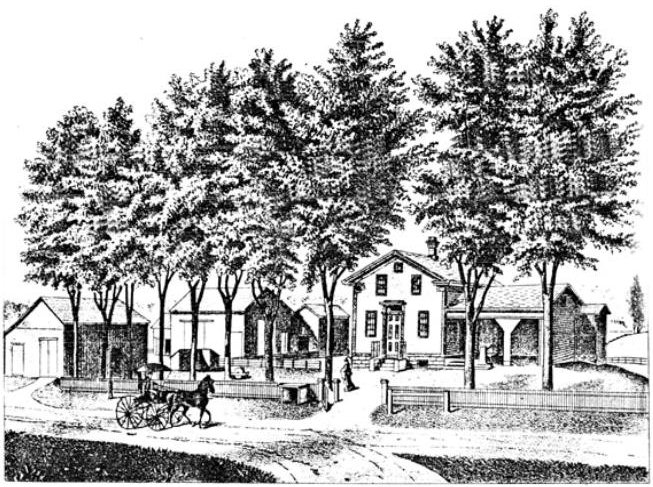 |
|
| Residence of Daniel Prosser,
Perrysburg, Cattaraugus County |
|
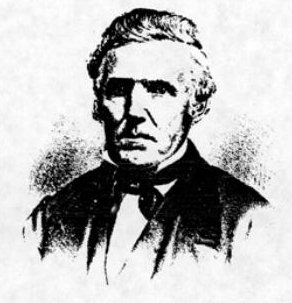 |
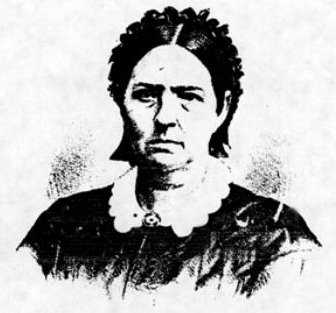 |
| Thomas Wells |
Besty Wells |
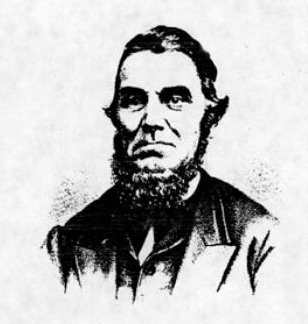 |
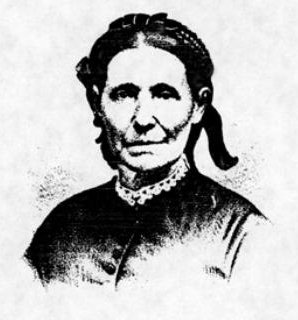 |
| Daniel Van Vlack |
Jane Van Vlack |
The Jenk & Ross Factory, No. 9, in the Rugg neighborhood, was built on the site of an old school-house, in 1878. It is very neatly built in the form of an L, and is furnished with two vats. There are 32 patrons, having 330 cows, which produce about 6000 pounds of milk per day. In this neighborhood was formerly an extensive factory, owned by John Hall, which has not been in operation the past six years.
The Versailles Factory, a mile and a half south from that village, was erected in 1867, by E. Ticknor, and was favorably known by his name. It is a frame two-story structure, 36 by 100 feet, and contains 3 vats. The factory is carried on at present by the McAdam brothers, and employs the Chaddar process, making 12 cheeses per day. It has 45 patrons.
The census of 1875 reports 1629 milch cows in town, the milk of 1440 of which was sent to factories.
VERSAILLES
is a pleasantly-located village on the south bank of the Cattaraugus Creek, about five miles north from Perrysburg village, and six miles from Gowanda. The stream here makes a rapid descent, and by its improvement good waterpower is afforded for ordinary milling purposes. Its future usefulness was foreseen by the agent of the Holland Company, who reserved it until its value had been greatly enhanced by the surrounding settlements. About 1830 the mill-site and lands adjoining became the property of Lee & Barker, who improved it a few years later, building a good dam, from which led a race which afforded excellent power for the grist-mill they built the same season. It had a fair grinding capacity, and was much patronized when the power at other points failed from the drouths which prevailed about that time. Other industries were soon carried on here, and the place grew quite rapidly about 1840, soon having its full complement of stores, shops, and other adjuncts of a village. It now contains a fine church, a good schoolhouse, 2 mills, tannery, 3 stores, a hotel, post-office, and numbers several hundred inhabitants.
The first grist-mill erected here was destroyed by fire while belonging to Norton & Green. Upon its site another mill of large proportions and great capacity was erected about 1859 by Sellew & Popple. This, also, was burned down about 1875. A third grist-mill below this point, and on the same race, was erected by the Nortons, which was destroyed by fire about 1872, before it was gotten in operation. Several saw-mills and lumber-manufacturing establishments were also carried on, and a mill belonging to Hanford & Cook is at present here operated.
Benjamin Rathbone, of Buffalo, opened a store at this point about the time the first mills were built, and carried it on in connection with his lumber business. Hamilton and Darwin Barker were early storekeepers in the house now owned by Julius Horton, and others in trade were Norton & Sellew, F. E. De Wolf, D. N. Parker, and H. Chapman. The latter stand is now occupied by E. Brown, and James Pettit has a store in the Sellew building.
The first public-house was kept by J. Sherman, and, among others, afterwards, by Walker, Palmer, and Willey. It is now conducted by Charles Hinds.
The post-office was established about 1840, A. H. Barker being the first postmaster. Subsequent officials have been D. N. Parker, C. F. Norton, F. E. De Wolf, H. Chapman, and the present, E. Brown. There is a daily mail by stage from Perrysburg, village.
As physicians, Doctors Ellis, Beale, and Hazelton were formerly located here; and Dr. Laselle is the present practitioner.
THE VERSAILLES TANNERY,
L. Palmer & Son, proprietors, is located in the southern part of the village, and was established in 1861. It contains 22 liquor-vats, in which 2000 sides of leather are hemlock-tanned annually, one-fourth being thoroughly finished. The motive-power is steam. Soon after 1830, Gen. Barker, of Fredonia, built a tannery near the creek, which was torn down and enlarged by R. Green, and steam-power substituted. It did a large business, but shared the fate of the mills in the village, and was destroyed by fire in 1860.
L. N. Bunce had a small tannery in the upper part of the village, in which are now
THE VERSAILLES BOTANIC MILLS.
These were established about twenty years ago by A. Beale & Co., for the purpose of preparing barks, roots, and herbs for medicinal uses, large quantities being put up annually. They were subsequently owned by Starr & Pettit, and at present by D. R. Barker, under the management of J. M. Pettit. The motor is steam, which drives also a run of stones for grinding feed.
At the village of Versailles are
H. CHAPMAN'S VEGETABLE AND SMALL FRUIT GARDENS,
embracing twenty acres of very fertile land, situated on a well-drained and elevated flat. Mr. Chapman began growing vegetables and berries about twenty years ago, and is the pioneer as well as the most extensively-engaged market-gardener in the county. His grounds at present contain four acres of Wilson's strawberry, five acres of Conqueror, Trophy, and Hathaway tomatoes, two acres of Early Kent and Marathon peas, and five acres of water- and muskmelons. There are also several acres of early corn; beets, cabbages, and cucumbers, and 20,000 peach-trees, several years old, growing in the nursery. In a green-house, 90 feet long, and in 800 feet of hot-beds, thousands of early vegetable plants are yearly grown and shipped to all parts of this section of the country. The vegetables and fruit find a ready sale in the oil regions of McKean County, and aggregate many thousands of dollars per year. Eight men are employed in carrying on the business.
PERRYSBURG
is the largest and oldest village in the town. It has a fine location in the southern part, chiefly on lots 11 and 1 2, and extending on to lots 19 and 20, growing from a cluster of houses on the corners of the highways, which here intersect each other, to its present size,-a place of about 400 inhabitants. The land on which the village is built was first owned by Wm. Cooper and Elisha Ward, both of whom were early business men. Its growth was as a trading point, until it became a station on the Erie Railway, since when it has yearly become more important. It now contains a fine church, several public halls, hotel, stores, and factories, which are detailed below.
TAVERNS AND STORES.
In the present village the first public-house was opened about 1821 by Elisha Ward, who had settled on lot 12 about three years previous to this time. His place was a log house, which stood on the site of the present tavern; the upright part of which Ward built in 1828. Among the landlords that succeeded him were Ira A. Torrey and John G. McGee. Chancellor Campbell was the keeper in 1837, and Russell Briggs at a later day. For a period the house was used for other purposes, but since 1852 has been conducted by Chancellor Campbell as a hotel.
An opposition tavern was erected by Isaac Shaw farther up the street, which was kept many years by Wm. Cooper, and became one of the best known stands in the county, the neighborhood being most generally designated as "Cooper's Corners." In after-years this in after-years this became a tenement.
A third tavern stand was near the railroad-crossing, the house being kept by a Mr. Palmer, but this was closed long ago, leaving the Campbell House the only one in the place.
The first store was opened in 1827 by Cook & Pelton, in a building erected by a man named Cobb, and who is sometimes reported as a partner of the firm. The store stood on the corner now belonging to Dr. Gray. Hooker & Gardner were successful merchants soon after, and A. Clark and Nathan Blackney each had stores at a later day. R. L. Blackmer is also remembered as a prominent merchant. About 1865, F. S. Royce erected and occupied the store which, since 1868, has been the business place of A. M. De Long. Another store has been kept the past twenty years by Orrin Clark and his sons, Alfred and Julius. James Southworth put up a fine business house near the depot some time after 1860, in which was carried on an extensive trade a number of years. In this building are several fine halls for public meetings and society purposes.
The post-office was established about 1830, with Wm. Cooper as postmaster, a position which he retained until after 1840. In 1833 the office reported $54.09 accrued postage. Later postmasters were members of the Blackney and Clark families. Alfred Clark is the present incumbent, and the office receives and dispatches two mails per day.
The village has never had many professional men. It is said that Dr. H. T. B. Gray was the first to locate permanently as a physician. He continued in practice until his death, a few years ago. Dr. A. D. Lake, the present physician, has been located here since 1869.
Luther Allen transacted much of the legal business of the citizens of the town, but had never opened a regular office in it. E. A. Nash was in practice as an attorney a short time; and David Moody is the present legal representative.
SECRET ORDERS.
Perrysburg Lodge, No. 62, Ancient Order of United Workmen, was organized Feb. 7, 1877, with 23 chartermembers. The present officers are A. M. De Long, P. M. W.; A. D. Lake, M. W.; James McAdams, F.; Moses Howlett, O. ; and D. W. Sprague, R. There are 48 members.
Forestville Chapter, No. 135, of Royal Arch Masons, was instituted at Forestville, removed to Gowanda, and about 1862 established at Perrysburg. The members number 53, and the officers are Frank Campbell, H. P.; J. W. Dauber, K.; Wm. A. Fish, Scribe; W. L. Haven, T.; and Robert McCubbin, Sec. The meetings of both of the above lodges are held in a very neat hall, in the De Long building.
THE PERRYSBURG AGRICULTURAL WORKS AND WOODEN-WARE MANUFACTORY
are the outgrowth of a small business begun here about twenty years ago, by Russell Briggs, and carried on since 1866 by W. R. Briggs. At present they embrace a three story main shop, 30 by 66 feet, in the basement of which is a 30 horse-power engine, and a two-story cooperage, on the opposite side of the street, of less extensive proportions. Adjoining is a vinegar-factory, for the production of that article from cider.
The works are operated chiefly in the manufacture of grain- and corn-cradles, 2500 of the former and 500 of the latter per year; and stave-baskets, of which 18,000 are made; 30,000 cheese-boxes and 5000 grain-measures, as well as several thousand butter-firkins, are also manufactured yearly, giving employment to 30 hands.
SPRAGUE & TICKNOR'S GRIST- AND LUMBER-MILLS,
in the lower part of the village of Perrysburg, were begun in 1869, as a saw-mill, whose cutting capacity was 5000 feet per day. A wood workshop and planing-mill, 40 by 60 feet, three stories high, were thereafter added, and supplied with machinery for manufacturing all kinds of barrels, tubs, and baskets, out of the rough log. The manufacture of scythesnaths has also been carried on extensively. In 1874 a grist mill, 36 feet square and two stories high, was added to the buildings already here located, and the whole have been successfully operated since. The motive-power is a 65 horse-power engine, and 15 men are employed.
In the village are also a large cheese factory, elsewhere noted, and half a dozen good mechanic shops.
A tannery, east of the village, was carried on in a small way in early times, but was long ago abandoned. In the early history of the place, Phineas Spencer had a distillery, where the village now is, and other parties had small asheries.
SCHOOLS, PAST AND PRESENT.
On the 1st of July, 1820, the school commissioners, Joseph Keyes and John Sprague, reported to the State superintendent that the town contained seven districts, two of which maintained public schools each three months, viz.: District No. 4, township 5, range 9, had 15 scholars; and district No. 5, townships 5 and 6, range 9, bad 42 scholars. Six dollars was received by these schools from the State; and the principal text-book used was Webster's spelling-book.
In 1836, after the town had been reduced to its present size, 9 whole and 4 fractional districts were reported.
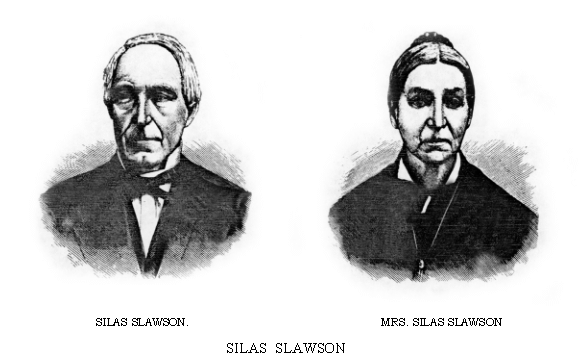 |
SILAS SLAWSON
was born in Penn Yan, N. Y., in 1814, and with his father moved to Hanover, Chautauqua Co., N. Y., in 1822, where he resided until 1866, when be removed to Perrysburg, in this county, where his home has continued to be. In 1856, under the act authorizing the election of a school commissioner for each Assembly district in this State, Mr. Slawson was selected for the second district of Cattaraugus County. He had previously been a successful teacher; and entered upon the work of this responsible office with enthusiasm, and continued performing its duties with untiring energy during the term of nearly three years. As soon as his round of examination of, and granting certificates to, teachers was completed, he commenced visiting the schools, aiding in creating new districts or consolidating old ones, and harmonizing differences as they occurred. He was emphatically a worker; continually on the move from school to school in the eighteen towns comprising the Assembly district; imparting his energy to teachers, urging them to greater effort in their honorable profession, and inspiring pupils with the importance and necessity of education. It is not too much to say that no commissioner has since excelled him; and, also, we state the fact that he held the Teachers' Institutes, with his associate commissioners of the first district, during his term. He has filled several positions of public trust in his towns with intelligence and strict integrity.
Mr. Slawson and his wife are now enjoying the fruits of an industrious life,-a pleasant home in the village of Perrysburg, with a competency honestly acquired, respected by their neighbors and numerous acquaintances.
Newton Slawson was a teacher several years, justice of the peace twelve years, is a thriving farmer in Perrysburg, and with his wife, who is an intelligent lady, are living in a pleasant home, with good surroundings, and both are highly respected. He twice offered his services to the Government as a soldier in the war for the Union, but was rejected on account of physical disability. Intent upon sharing in the responsibilities of the war, he furnished a "representative recruit," who served in his stead during its continuance. He enjoys the confidence of his townsmen.
Samuel E. Slawson was a merchant in Perrysburg for several years, and is now in the same business at Bradford, Pa. He owns a good farm in Hanover, and is in flourishing circumstances. His wife is a lady of cultivation, a successful teacher of music. They are happily situated and are highly respected.
Mr. Slawson's grandmother was a twin sister of Col. E. A. Nash's great-grandfather, Silas Nash, and they were born in Hartford, Conn., in 1765. Mr. Slawson was reared under the roof of his venerated grandmother, and he attributes his habits of study, thrift, and industry to her watchful care, kindness, moral teachings, and energy.
Ebenezer Slawson was born in Schenectady Co., N. Y., Aug. 17, 1795; Betsy Carr, his wife, was born in Maryland, in 1798. They were married at Penn Yan, N. Y., June 12, 1813. He died Aug.18, 1877 ; she died March 9, 1858. They had nine children-
1. Silas Nash Slawson, born in Penn Yan July 7, 1814. He married Temperance Lurancy Hopper, daughter of
Nathanial and Luccretia (Taylor) Hopper, in Hanover, N.Y., March 10, 1836, Three children -
I. Newton, born in Hanover, N.Y., Fe 22, 1840; He married Rose C. Brown, April 30, 1863.
two children; Minnie, born Jan. 12, 1865; Willie, born May 28, 1873.
II. Temperance Ann, born in Hanover, Dec. 15, 1845; she died Feb.13, 1846
III. Samuel Emery, born in Hanover, May 12, 1850; he married Inez Parsell, Sept. 17, 1873
2. Samuel, born July 17, 1816 ; married Mills Stone, in April, 1836; he died Oct. 5, 1872; two children.
3. Melissa, born Sept. 21, 1818; married Roderick W. Rider, Oct., 1835; six children.
4. Eliza, born Oct. 20, 1820; married John S. Bettis; she died April, 1849 ; two children.
5. Daniel Carr, born Aug. 18, 1823 ; married Mary P. Scofield ; he died August 5, 1848; one son.
6. Caroline, born Feb. 3, 1825; married George W. Merritt ; three children.
7. John, born Aug. 24, 1831; married Mary Dennison; eight children.
The Greatest number of months taught in any district was 10 ; the least, 5 ; the number of children taught was 433 ; and the cost of the schools was $573.26.
In 1873 the commissioner reported the following:
| Money | ||
| District. | Children. | Paid by the State |
| No. 1...... | 18 | $73.92 |
| " 2...... | 99 | 257.24 |
| " 3...... | 21 | 89.75 |
| " 4...... | 145 | 296.81 |
| " 5...... | 32 | 104.35 |
| " 6...... | 36 | 99.52 |
| " 7...... | 19 | 81.19 |
| " 8...... | 38 | 101.50 |
| " 9...... | 25 | 88.57 |
| 433 | $1192.85 |
THE RELIGIOUS SOCIETIES.
The zealous Methodist preachers proclaimed the word to the pioneer settlers as early as 1820, and an effort was made that year toform a society to secure the benefits arising from the offer of a lot of land from the Holland Company. But the members of that faith were too few in numbers and lived too remotely to carry the purpose into effect.
THE BAPTIST CHURCH
was the first organized, at a meeting held for this purpose, near the present village of Versailles, Nov. 19, 1821. Rufus Watson, Phineas Spencer, Benjamin Waterman, John Clark, and Daniel Allen were selected as trustees, and a title secured for the 40 acres of land offered by the Holland Company to the first religious society in town, which were located on lot 25. Upon this a parsonage was erected years after, which has since been occupied by the clergy of the church.
In addition to the persons already named as trustees, the Baptist Society had, as early members, Elisha Ward, Hugh Campbell, Harry Pelton, Isaac Balcomb, Jacob Balcomb, Sereno Edwards, Elijah Stillwell, Ahiram Gaylord, John Johnson, Ralph Griswold, Almerin Sprague, Samuel Loomer, Elam Lee, Benjamin Hill, James Waters, Alvah Wood, James Norton; and later, Win. Hull, Hosea Hogeboom, and Daniel Wood belonged to the society.
The church was formally constituted March 19, 1822, but it does not appear that it was supplied with a regular pastor until 1838, when the Rev. Sheldon N. Smith served it in this capacity. After a few years Elder D. Platt became the officiating minister, and in 1842 the Rev. Salmon Horton was reported as the preacher. Subsequently the pastoral office has been filled by the Revs. M. T. Wadsworth, T. T. Horton, Nathan Wood, J. C. Allison, and J. A. Pickard.
The church has fifteen members, whose meetings are held in the Methodist meeting-house at Versailles
The trustees of the society in 1878 were He
ry Hogeboom, Jonathan Hogeboom, and Oliver Staunton.
THE METHODIST EPISCOPAL CHURCH OF VERSAILLES
was legally organized Jan. 26, 1842, and Lester Wood, Philander Porter, and Martin Lindsley elected trustees. The same year a small frame meeting-house was erected in the village, in connection with the Baptists, in which worship was held until the fall of 1878, when a new edifice was occupied for this purpose. It is an attractive frame building 38 by 56 feet, costing $3000, and has a seating capacity for 300 persons. The present trustees are William Herrington, Ira Hawley, and Clinton Van Vlack.
The church at Versailles has always been connected with other Methodist charges in the town, and has had the same ministerial connection as the Perrysburg church. It had a membership of 45 in 1878, and supported a Sabbath-school, numbering 68 scholars, superintended by Heman Merrill.
THE WEST PERRYSBURG METHODIST EPISCOPAL CHURCH,
in the Rugg neighborhood, is one of the oldest societies of this faith in town, and was organized about 1822 as a Methodist class, numbering eight or ten members. Services were thereafter held in the houses of the members and in the school-house in this locality, but no church building was erected until 1852.
Dec. 19, 1851, the members incorporated themselves as the "Rugg Society of the Methodist Episcopal Church," and elected Stephen R. Hall, John R. Dawley, and Carlos A. Rugg trustees. The following season a frame meetinghouse was built on the northwest corner of lot 38, which was remodeled and much improved in the spring of 1878, and is now worth $1500. It will comfortably seat 300 persons, and was rededicated to the worship of the Divine Being the latter part of June, by the Rev. Mr. Merchant, of Fredonia. The church is connected with Versailles and Perrysburg in forming a circuit, and has had the same pastoral care as those bodies. There are at present about 25 members. A Sunday-school having 40 members, and 0. Putney as Superintendent, is also connected with the church.
The trustees of the society in 1878 were 0. Putney, J. Hall, F. E. Ranney, F. Strickland, A. Rugg, Warren Hall, and Monseur Pond.
THE PERRYSBURG METHODIST EPISCOPAL CHURCH
was incorporated Nov. 9, 1853, with a board of trustees composed of Truman Edwards, William Cooper, Henry C. Hurd, Abial Titus, Luther G. Chadwick, James Cooper, Jr., and Chancellor Campbell. About that time a house of worship was erected for the society by N. Cook, at a cost of $1200, which was consecrated by the presiding elder, Roy. W. F. Wilson, Feb. 8, 1854. In 1865 it was repaired and very much beautified, and will now accommodate 300 persons. There is also a comfortable parsonage close by, and the estimated value of the entire property is $3500. It is in charge of the following trustees and their successors: W. L. Haven, Benjamin Cooper, Orrin Knowlton, J. B. Marvin, A. R. Graves, D. 0. Ball, A. M. De Long, and L. G. Chadwick.
The church has no clear record of its early history; the oldest accessible account being the minutes of a Quarterly Conference, held in the village in 1849. Five classes were reported, under the leadership of Charles Blackney, Benjamin Parkman, Isaac Dawley, George Kirkland, and John Waters. The Rev. W. H. Hunter was at that time the presiding elder, and Rev. I. H. Tackett the pastor. One Sunday-school was reported.
About this time the Perrysburg circuit was formed, which greatly promoted the growth of the different classes, and induced the building of churches, as has been noted above. The Rev. J. Schofield was the pastor in charge in 1851, and was followed in 1852 by Rev. R. L. Blackmer, during whose pastorate the buildings were completed. Since that period the preachers in charge of the circuit have been the Revs. S. A. Warner, Edwin Hull, James H. Allen, W. W. Warner, J. K. Shearer, A. A. Horton, J. W. Davis, J. Marsh, J. Shields, N. W. Jones, and E. Brown.
The church at Perrysburg had, in 1878, 50 members, and maintained a Sunday-school which reported a membership of 65 scholars. R. E. Waller was the Superintendent. It may not be uninteresting and inappropriate to give, in this connection, the names of the early ministers, and those who preached in this locality before the circuit was formed, commencing with 1819: Revs. Robert C. Hatton, Benjamin P. Hill; 1820, John Summerville; 1821, Nathaniel Reeder, Ira Brunson; 1822, Richard Wright, Sylvester Cary; 1823, Parker Buel, Richard Wright; 1824, Josiah Keyes; 1825, Henry Knapp, John Scott; 1826, Job Wilson, John P. Kent; 1827, Joseph S. Barris Zachariah Ragan; 1828, Joseph S. Barris, Samuel Ayers; 1829, James Gilmore, Alured Plimpton; 1830, David Preston, Samuel E. Babcock; 1831, David Preston, John Robinson, Nelson Henry; 1832, John K. Hallock, Daniel M. Stearns; 1833, John K. Hallock, Ignatius H. Tackett ; 1834, Hiram Luce, L. Gregg,; 1835, Lorenzo Rogers, I. H. Tackett, Darius Smith ; 1836, J. Demming, Darius Smith; 1837, T. Goodwin, M. Hill; 1838, Samuel Gregg, H. J. Moore;. 1839, T. Stove, E. J. L. Baker; 1840, J. U. Rich, T. Stone; 1841, D. Smith, D. Pritchard; 1842, W. B. Lloyd; 1843-44, Nirom Norton; 1845, W. S. Worrells, T. H . Cummings'; 1846, J. Uncles, S. Churchill; 1847, A. Burgess, L. Blackford; 1848, J. E. Chapin, J. N.. Henry.
The bounds of conferences, districts, and circuits, were so frequently changed that the above list may not embrace the names of all who preached Methodism in the northwestern part of the country. Additional names will be given in the histories of the Leon and Randolph churches of those who sometimes preached in Perrysburg.
THE FIRST CONGREGATIONAL SOCIETY OF VERSAILLES
was incorporated at a meeting held at the school-house, Feb. 3, 1846. Trustees were chosen composed of Samuel Holmes, James Nichols, and Alexander H. Barker. If we have been correctly informed, nothing further was done than to perfect this preliminary organization. Although occasional Congregational meetings were held the following years, the membership was too feeble to carry on a regular church work, and some of the members again connected themselves with the church at Gowanda, from which they had withdrawn.
BI0GRAPHICAL SKETCHES.
WM. COOPER*
was born in the town of Stillwater, Saratoga Co., Dec. 8, 1793, where he lived until 1816, when, single-handed and alone, he came to this town, where he located and commenced clearing a farm in the then unbroken wilderness. He erected, with his own hands, a log shanty, in which he lived alone for over a year without any associates out the wild beasts of the forest and a cow, which he fed on browse, from which he derived his only subsistence during that time, save the little Indian meal which he brought a great distance on his back.
In 1817 he returned to his native town, married a daughter of Jeremiah Eddy, of Stillwater, and again returned in 1817, accompanied by his wife, Truman Edwards, Benjamin Parkman, and Daniel Johnson, and their wives, with ox-teams, driving their cows with them. Perrysburg at that time comprised the towns of Perrysburg, Persia, Dayton, Otto, and East Otto, at the first town-meeting in which town but seven votes were cast.
Mr. Cooper, while actively engaged in clearing his farm, which has ever been kept in his family,-was not unmindful of the public good. He watched, with unceasing care, the construction of all the public highways for miles around him, being careful to have the same regularly located on the lot-lines, and wrought with untiring energy till they were all susceptible of travel. He was the founder of the first district school in this town, and has ever labored to maintain a liberal system of education. Nor did his ambition rest here, but freely contributed of his influence and means to the organization of a Christian society and the erection of a place for public worship.
Generosity, energy, perseverance, industry, economy; cheerfulness. and harmony were his chief characteristics: With his mind ever active,-extending charity unto all,-he became. eminently distinguished among his neighbors; who relied implicitly on his honor and judgment, and thus became, meritoriously, the recipient of many official trusts.
He amassed a large fortune, from which he gave without stint to his children, for whom he held the strongest regard. As age advanced, his mind, with his body, became weak and incapable of longer contending with life's storms, and he waited, with perfect composure, the time of his dissolution,-often expressing a desire to try the realities of the life which is to come. He failed gradually but constantly, in body and mind alike, became weaker and weaker, until respiration ceased. He departed on the 31st of December, 1872, in Perrysburg, aged seventy-nine years and twenty-three days.
* Deceased.
HOMER WOODIN
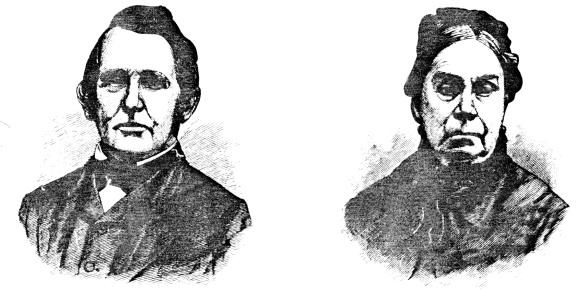 |
| Homer Woodin
Photos
by Edgerton & Chase
Mrs. Homer Woodin |
Homer Woodin was born in Bristol, Hartford Co., Conn., July 6., 1806. Was married in Burlington, Conn., March 10, 1829, to Miss Vashti Beckwith, and she was born at Burlington, Connecticut, May 14, 1805 ; and since the death of her husband, which occurred at his home-place in the town of Perrysburg, Dec. 12, 1875, she has lived, and is still. living, at Dayton Station.
Homer Woodin's family consisted of the following children: William Woodin, born Dec. 27. 1829 ; Martin H. Woodin, born Sept. 1, 1831; Horatio Woodin, born April 12, 1833; Lydia Ann Woodin, born Jan. 29, 1836, wife of Charles W. Chaffe, now living at Gowanda, N. Y.; Rachel Woodin, born April 15,1840, was married to Frank Daggart, of Springville, N. Y. ; Ellen Eliza Woodin, born Sept. 5, 1838, is the wife of Amos M. Hall, and is now living at Dayton Station; Eri Woodin was born June 2, 1843 ; Luna Woodin was born May 29, 1846, is the wife of Newton A. Chaffe, and is now living at Dayton Station.
Of the above-named children born to them four are dead, as follows: Wm. Woodin fell dead of the heart-disease, in Otto, Jan. 2, 1864, leaving a wife (Abi S. Darbey) and one son, Homer E. Woodin, and one daughter, Theresa V., who died in about a year after her father's death, with diphtheria,-the son is still living; Rachel Daggert died Nov. 19, 1865, of typhoid fever, in Perrysburg, leaving no children ; Horatio Woodin, their son, died in Perrysburg, of typhoid fever, Dec. 11, 1865,-he was unmarried; Eri Woodin died April 4, 1878, in Perrysburg, of consumption, leaving a wife (Hattie Stilson) and three children,-two girls, Mary and Georgie, and one son, William.
The father of Homer Woodin was named Eri Woodin ;was a blacksmith by trade; lived in Bristol, Conn., and then moved to Farmington, Conn.; then moved back to Bristol, where his wife died; then be came to Otto, N. Y., and lived with Homer, who was his youngest child. Then his older son, Harmon, with whom he had lived in Connecticut, moved to Ohio and took his father with him. After living in Ohio about five years, he, with Harmon, moved to Iowa, where he died, twenty or twenty-five years ago, and where are also buried all his brothers and sisters. His father's family consisted of Harmon, Louis, Lydia, and Homer,-two boys and two girls.
Homer worked on a farm for William Whitman, from the time he married, in March, until about the 1st of November, 1829, and then moved into the western part of the State of New York, and settled in the town of Otto, Cattaraugus Co. They came from Burlington, Conn., to Albany, N. Y., by team, and were three days on the road. Her brother, Hoel Beck-with, moved with them, and settled with them in the same town. They came from Albany to Buffalo, via Erie Canal; it took them two weeks to make this trip. Buffalo at that time was a small place compared with Buffalo of to-day. They hired a man with his team, who brought them to Zoar, to Hyal Hill's tavern, where they stayed overnight.
Luzon Bottsford was living in Otto at this time ; had been living there about two years. He married Mrs. Woodin's sister Polly. Mr. Bottsford met them at Hill's tavern, and they went and stayed with Mr. Bottsford and family about three weeks, until Mr. Woodin found and bought one hundred acres of land with a rough shanty already built upon it, and upon which there was about twenty-five acres of improvement. This land he bought of Harvey Butler, and paid him three hundred dollars cash down for the improvements that he had made. He then went to Ellicottville and paid twenty-five dollars for a new article of Deveraux, the land-agent, and he met his payments upon his land promptly. He paid, we think, at the rate of one dollar and twenty-five cents per acre in addition to what, has already been mentioned. He moved into the shanty mentioned, where the two oldest children were born. The remainder of the family were born in a log house on the same piece of land, which was built and moved into about four years afterwards, in which log house they lived about fourteen years.
The next spring, in March, 1830, leaving his wife in care of Mr. Bottsford's family, he started for Connecticut with only seven dollars in his pocket, the only money he possessed. He walked back afoot, being taken sick upon the road. He stopped with his sister Louise about a week, in what is called the Black River country. He then continued his walk, and arrived at Connecticut and hired out to Gad Cole, of Farmington, an old acquaintance of his, and worked on a farm. He came back in the fall with one hundred dollars, and this money, thus earned, was the saving of his place ; and he bought him a yoke of oxen. They lived on this piece of land about twenty years, the two last years of which time were spent in enjoying the comforts of a good frame house, which he built. He then traded this piece of land with Stephen Soal's farm of four hundred acres, where they commenced and kept a dairy of cows. They remained here about seven years, when, his two oldest sons having married, he let these sons and their wives run this farm. He then bought and moved the remainder of his family upon the farm of Warren Allen, of three hundred and thirty acres, in the town of Perrysburg, about one and a half miles west of Gowanda, where he lived the remainder of his days, excepting that in the spring of 1869 he bought the home-place of William Smith, containing some thirty acres, which adjoined the farm immediately on the east line, on which place he moved with his wife, while the Allen farm was carried on by his son Eri, with its fifty cows. The most of Mr. Woodin's time was spent, after locating in Perrysburg, in buying butter and cheese. He undoubtedly bought more cheese and handled more money in this business than any other man in this county.
In politics he was a Whig as long as that party existed, and when it went down he connected himself with the Republican party, and was always a steadfast and consistent Republican, voting and working with that party. He held the office of assessor and justice of the peace for many years. He worked for his party through principle, and not for official honors, as these he did not crave. He had the nomination of Assemblyman offered to him at one time by his district convention, but would not accept it, as a thorough business life was more acceptable to him. He possessed great moral worth, and was a man of no uncommon energy.
Mrs. Vashti Woodin's father was a farmer. He owned one hundred and fifty acres of land. He lived and died in the same town in which he was born, which was the town of Burlington, Conn.
Her father's name was Abner Beckwith. He was married twice. His first wife was surnamed Humphrey, by whom he had four children,-three boys and one girl,-viz., Samuel, Israel, Humphrey, and Lydia. His second wife was Rachel Laird, by whom he had three girls and two boys,-namely, Eliza, Polly, Vashti, Hoel, and Orvill.
Mrs. Woodin's mother -- Rachel -- was born in Massachusetts, Sept. 25, 1769, and died at the home of Mrs. Woodin, in Perrysburg, Aug. 31, 1853, where the twelve last years of her life were spent, where every attention was shown her, and her last days made comfortable by the affectionate kindness of her daughter and husband. She could remember, and did relate to her grandchildren, many incidents of the trying times of the Revolution.
